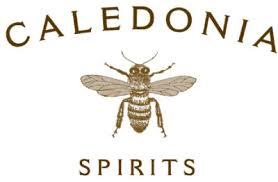Posted March 17, 2022 at 10:36am by Anonymous (not verified)
Forest to Flask

Written by Jennifer Rose Smith
Published in Vermont's Local Banquet
Do you know a cooper? It’s a query likely to produce confusion, as Caledonia Spirits’ founder Todd Hardie learned by putting the question to just about everyone. “For most of a year, each time I met someone, I’d say ‘Hello, do you know a cooper?’ And they would say, ‘What’s a cooper?’”
One hundred years ago most towns had a cooperage that shaped whiskey casks, milk buckets, and butter churns, but between Prohibition and plastics, that exacting craft dwindled. Now, Caledonia Spirits, a Hardwick distillery, has plans to turn fields of local grain into the kind of oaked whiskey that early Americans sipped and to try something that hasn’t been done for many years: age Vermont-made spirits in Vermont wood.
Todd—along with Caledonia’s head distiller Ryan Christiansen—consider aging in Vermont wood to be a natural extension of their distilling process. It’s an undertaking that starts with drums of unpasteurized honey or hoppers full of local grain, and a process that they perceive to be as much about agriculture as it is about alcohol. As they work to develop local rye and corn into whiskeys, they want to infuse the aged spirits with as much of Vermont’s terroir as possible.
“Most of what you taste while drinking bourbon are wood oils,” Ryan says, “so where and how that wood grows is going to influence the flavor.”
Their plan was conceived in the heat of the “Great Barrel Shortage of 2014,” an anachronistic-sounding crisis that developed as the craft distilling revival outpaced the production of oak barrels used for aging spirits.
Todd and Ryan worked with a local forester to find a promising stand of white oak, and a family-owned sawmill to process it. Then one day at a farmers’ market, a customer said:,“I know a cooper!” The tip led them two hours outside of Vermont, to Bob Hockert’s small cooperage in the Adirondacks, which is the last in the Northeast. Bob learned his craft through books and lots of practice, and when Todd contacted him with an idea to make whiskey that was entirely regionally sourced, Bob was intrigued. “It’s a very unusual project,” he says. “I don’t know of anyone who’s doing something similar, because most cooperages don’t wander out into the woods, cut trees down, and saw them up to make barrels.”
Bob quickly found himself in a Champlain Valley forest with Todd, Ryan, and forester Joe Nelson, selecting trees by hand, looking for wood unmarred by insect bores, knots, and other irregularities. “The oak used in manufacturing a barrel has to be handled, cut, and selected just so,” Bob explains, “and the modern lumber industry is not used to the parameters that a cooperage needs.”
The wood is hand selected, air dried for up to a year, and quarter sawn, a cut that orients the wood fibers to make the finished barrel as water tight as possible. Every oak barrel is then roasted and charred by the cooperage. Charring creates a layer of activated charcoal, which clarifies and filters the spirit as it circulates through the barrel. And roasting, which takes place over many hours, breaks the chemical bonds in the wood’s lignin, cellulose, and hemicellulose into molecules with familiar aromas: think vanilla, caramel, smoke, and coffee, elements many whiskey aficionados seek out.
Read more at Vermont's Local Banquet!
